I'd use a JTable for displaying and sorting the pixels, and an image with small translucent cross-hairs to show the selected pixel(s). Display the image in a JLabel, and there is a basic workable component that can be customized to need.
Results
All images are seen at a browser based 8X zoom scale (FF will dither it smoothly, which makes the lines less sharp, but almost as clear).
The information in pixel x/y, RGB & 'gray scale difference' between that pixel and the surrounding pixels was calculated and shown in a sortable table (of 3200 rows).
Each titled section shows an image, as well as the first six rows of the table, indicating both the sort keys used, and the rows selected.
Image of interest - nothing selected.

The 3 darkest pixels seem obvious, without any further prompt..
X Y RGB Diff. Select
0 0 192 20.75 -
1 0 186 21.625 -
2 0 174 25.625 -
3 0 177 23.375 -
4 0 175 24.375 -
5 0 181 24.25 -
6 0 189 19.75 -
Darkest Pixels

But here are the darkest pixels high-lit with green cross-hairs just to check our logic.
X Y RGB ▲ Diff. Select
16 25 0 240.625 TRUE
6 30 0 240.125 TRUE
74 7 6 230.875 TRUE
78 31 112 37.875 -
79 34 112 22.75 -
75 37 115 31.375 -
Next Darkest Pixels

The difference in gray scale between the 'next darkest' pixels and their immediate neighbors is much less obvious. Not nearly as obvious as the darkest 3 pixels.
X Y RGB ▲ Diff. Select
16 25 0 240.625 -
6 30 0 240.125 -
74 7 6 230.875 -
78 31 112 37.875 TRUE
79 34 112 22.75 TRUE
75 37 115 31.375 TRUE
Next Biggest Difference

The next biggest difference in pixels by gray scale is similarly nondescript. The difference drops from over 200 pixels to less than 50.
X Y RGB Diff. ▼ Select
16 25 0 240.625 -
6 30 0 240.125 -
74 7 6 230.875 -
37 18 205 47.875 TRUE
31 20 209 45.375 TRUE
59 13 196 44.875 TRUE
Conclusion
Based on the data it seems those 3 darkest pixels are outliers & anomalous, so I'd say "image glitch".
Code
This is the Java code used to display/sort the brightness & color difference, & generate the images. It hot-links to the first, cropped image.
import java.awt.*;
import java.awt.event.ActionEvent;
import java.awt.event.ActionListener;
import java.awt.image.BufferedImage;
import java.util.ArrayList;
import java.util.logging.Level;
import java.util.logging.Logger;
import javax.imageio.ImageIO;
import javax.swing.*;
import javax.swing.border.LineBorder;
import javax.swing.event.*;
import javax.swing.table.*;
import java.io.*;
import java.net.URL;
class ImageBrightnessFilter {
BufferedImage bi;
JPanel gui = null;
ArrayList<Point> points;
JLabel l;
ImageBrightnessFilter(BufferedImage bi) {
this.bi = bi;
}
public static double getNeighborDifference(BufferedImage bi, int x, int y) {
Color c = new Color(bi.getRGB(x, y));
int r = c.getRed();
int tot = 0;
for (int xx = x - 1; xx < x + 2; xx++) {
for (int yy = y - 1; yy < y + 2; yy++) {
try {
tot += new Color(bi.getRGB(xx, yy)).getRed();
} catch (ArrayIndexOutOfBoundsException aioobe) {
tot += r;
}
}
}
return (tot / 8d) - r;
}
public JPanel getGui() {
if (gui == null) {
gui = new JPanel(new BorderLayout(2, 2));
ImageTableModel itm = new ImageTableModel(bi);
final JTable table = new JTable(itm);
table.setAutoCreateRowSorter(true);
JScrollPane tableScroll = new JScrollPane(table);
Dimension d = tableScroll.getPreferredSize();
Dimension shortTable = new Dimension(
(int) d.getWidth(),
table.getRowHeight() * 8
+ table.getTableHeader().getPreferredSize().height);
tableScroll.setPreferredSize(shortTable);
gui.add(tableScroll, BorderLayout.CENTER);
l = new JLabel(
new ImageIcon(
(bi.getSubimage(0, 0, 80, 40)).getScaledInstance(640, 320, 0)));
l.setBorder(new LineBorder(Color.BLACK));
gui.add(l, BorderLayout.PAGE_START);
ListSelectionListener lsl = new ListSelectionListener() {
@Override
public void valueChanged(ListSelectionEvent e) {
points = new ArrayList<Point>();
if (!e.getValueIsAdjusting()) {
int[] rows = table.getSelectedRows();
for (int row : rows) {
int index = row;
int x = (Integer) table.getValueAt(index, 0);
int y = (Integer) table.getValueAt(index, 1);
Point p = new Point(x, y);
points.add(p);
}
}
l.setIcon(new ImageIcon(getHighlightImage().getScaledInstance(640, 320, 0)));
l.repaint();
}
};
table.getSelectionModel().addListSelectionListener(lsl);
JToolBar tb = new JToolBar();
gui.add(tb, BorderLayout.PAGE_END);
JButton saveImage = new JButton("Save");
tb.add(saveImage);
ActionListener saveListener = new ActionListener() {
@Override
public void actionPerformed(ActionEvent e) {
String s = JOptionPane.showInputDialog(gui, "name");
File home = new File(System.getProperty("user.home"));
File f = new File(home,s + ".png");
try {
ImageIO.write(getHighlightImage(), "png", f);
} catch (IOException ex) {
Logger.getLogger(
ImageBrightnessFilter.class.getName()).log(
Level.SEVERE, null, ex);
}
}
};
saveImage.addActionListener(saveListener);
}
return gui;
}
public BufferedImage getHighlightImage() {
BufferedImage b = new BufferedImage(
bi.getWidth(), bi.getHeight(), BufferedImage.TYPE_INT_ARGB);
Graphics2D g = b.createGraphics();
g.drawImage(bi, 0, 0, null);
g.setColor(new Color(0, 255, 0, 95));
if (points!=null) {
for (Point point : points) {
g.drawLine(point.x - 4, point.y, point.x - 2, point.y);
g.drawLine(point.x + 4, point.y, point.x + 2, point.y);
g.drawLine(point.x, point.y - 4, point.x, point.y - 2);
g.drawLine(point.x, point.y + 4, point.x, point.y + 2);
}
}
g.dispose();
return b;
}
public static void main(String[] args) throws Exception {
String s = "I:\\pics\\Space\\Stellar\\2\\MarsSthHemisphereInSpring.gif";
File f = new File(s);
URL url = new URL("https://i.stack.imgur.com/z8U5w.png");
BufferedImage bi0 =
//ImageIO.read(f);
ImageIO.read(url);
final BufferedImage bi =
//bi0.getSubimage(160, 799, 80, 40);
bi0;
Runnable r = new Runnable() {
@Override
public void run() {
ImageBrightnessFilter ibf = new ImageBrightnessFilter(bi);
JOptionPane.showMessageDialog(null, ibf.getGui());
}
};
SwingUtilities.invokeLater(r);
}
}
class ImageTableModel extends DefaultTableModel {
BufferedImage bi;
final static String[] columnName = {
"X",
"Y",
"RGB",
"Diff"
};
public ImageTableModel(BufferedImage bi) {
super();
this.bi = bi;
}
@Override
public Object getValueAt(final int rowIndex, final int columnIndex) {
Object o = null;
int x = rowIndex % bi.getWidth();
int y = rowIndex / bi.getWidth();
int rgb = bi.getRGB(x, y);
Color c = new Color(rgb);
int r = c.getRed();
switch (columnIndex) {
case 0:
o = new Integer(x);
break;
case 1:
o = new Integer(y);
break;
case 2:
o = new Integer(r);
break;
case 3:
o = new Double(ImageBrightnessFilter.getNeighborDifference(
bi, x, y));
break;
default:
return null;
}
return o;
}
@Override
public Class<?> getColumnClass(int columnIndex) {
switch (columnIndex) {
case 0:
case 1:
case 2:
return Integer.class;
case 3:
return Double.class;
default:
return null;
}
}
@Override
public int getColumnCount() {
return columnName.length;
}
@Override
public String getColumnName(int columnIndex) {
return columnName[columnIndex];
}
@Override
public int getRowCount() {
if (bi == null) {
return 80 * 40;
}
return bi.getHeight() * bi.getWidth();
}
@Override
public boolean isCellEditable(int rowIndex, int columnIndex) {
return false;
}
}








